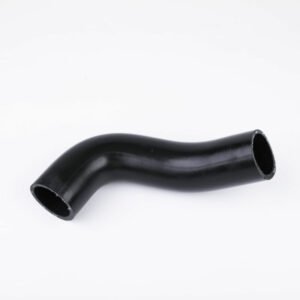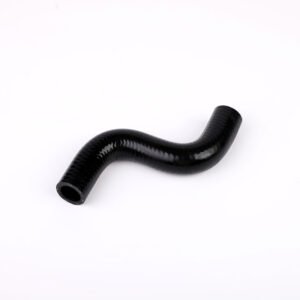Radiator Hose
What is Radiator Hose?
The radiator hose is the channel for cooling water circulation, which includes a water inlet hose and a water outlet hose. In additional, it’s a large diameter rubber hose, which conveys engine coolant between the engine and radiator, and then returns to the water pump. As part of routine maintenance, check the radiator hoses to ensure their integrity. Signs of damage or deterioration require preventive maintenance, which is easier and less destructive than alternatives.
What if the hose breaks?
Due to the high temperature of cooling water, the long-used radiator hoses are prone to crack and damage. And the vibration of the engine is another reason to affect radiator hoses.
Checking the radiator hoses frequently is a good habit. This way, it may avoid the leakage of cooling water caused by cracks and damage to the radiator hose. In case of a crack or damage at the end of the radiator hose, the end can be cut off directly. And then the hose can be plugged back. In addition, the radiator cap must be unscrewed to avoid excessive pressure on the cooling system. If the crack is small, the crack can be directly coated with soap.
If the middle part of the hose is cracked or damaged, part of the cooling water must be drained first. After all the water on the radiator hose is dry, use of tape or plastic paper wraps the damaged part to temporarily solve the problem. If the crack on the radiator hoses is too large, it is likely that water will still leak after binding. At this time, you must open the water tank cover to reduce the pressure in the water channel and the leakage of cooling water.
Characteristics Radiator Hose
Material Composition:
Typically made from tough materials like EPDM rubber, silicone, or reinforced rubber, which give it strength, flexibility, and resistance to the elements.
High Heat Resistance:
Designed to withstand high temperatures, often between -40°C to 150°C (-40°F to 302°F), ensuring they perform well under the heat generated by the engine.
Pressure Tolerance:
Radiator hoses are designed to withstand the pressure inside the cooling system, which typically ranges from 1 to 3 bar (14.5 to 43.5 psi), without bursting or collapsing.
Flexibility and Shape:
They’re flexible enough to fit into tight engine compartments and can be molded into complex shapes to fit different vehicle designs.
Reinforcement:
A lot of radiator hoses are strengthened with fibers or something else to make them stronger and tougher, so they don’t kink and keep their shape when they get pressure.
Aging and Ozone Resistance:
Radiator hoses are made from materials that resist aging and ozone, which helps prevent cracking and extends the life of the hose.
Low Permeability:
Designed to minimize gas and liquid permeability, which reduces the risk of leaks and keeps coolant flowing efficiently.
Customization:
Available in different sizes, lengths, and configurations to meet your specific needs, with options for straight or molded designs depending on how you want to use them.
Showing all 4 results



